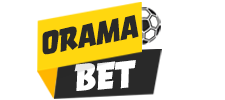There is a misunderstanding in the field of betting players, as many people think that everything is the result. The key to success is to find choices with real value and to surpass the final odds (closing lines) of betting companies. A good question is how often should this be done to make a profit?
The final betting odds of bookmakers (ie those that are formed at the last minute, one second before a match starts) are the most valid (or effective if you wish) recordings of the probability of the results. For example, when the final return is at 2.00 then the probability of a particular event to be made is close to 50%.
This is the best way to measure success and profit. If the player wins at 2.20 and the market closes at 2.00 then the expected win is estimated at 2.20 / 2.00 = 1.1 or 10% (minus the betting company’s profit margin).
The importance of the odds movement
Due to the great importance of luck in forecasting markets for sports games, no one can constantly really win the market. Regardless of how good his original predictions are, the effect luck complicates things. On the other hand, the player’s returns on the final odds are a more reliable tool.
Assuming that a player chooses the teams which he bets on accidentally and that odds are random, it is reasonable to assume that he will be able to overcome the final odds in about 50% of the time. It has been found that this is not the case in general. It turns out that about 30% of the initial odds are usually lower than the “real” ones. So if the player wagers randomly, he would lose about two-thirds of the time.
Movement of returns and expected value
In essence, there are theoretically few opportunities that we are offered to have in such a way a substantial advantage, according to the model of odds movement. It is estimated that at about 6.5% of the returns the expected profit exceeds 10% and less than 2% of the yields can give us more than 20%. However, to expect earnings from this method, the percentage of successful choices should be at least 50%. Many times bettors show too much confidence in their skills, believing that they can dominate the market by making the right choices, but the fact it is accidental events that make this job very difficult.
How often do we have to beat the closing lines to profit?
As mentioned before, we will have to beat the final returns in at least two thirds of the cases to expect a substantial profit. Note here, however, this: surpassing the closing lines does not mean beating the “real” winning odds. These are two different things. Even if we beat the final odds, we will fail to overcome true odds in 34% of cases, even though we will have 100% success. In order to have a good expectation of profit, we must overcome the “real” odds in 50% of cases. The table below shows the match between final odds and actual odds in two columns and shows us our goal (after, of course, deducting bookmakers’ profit).
| Initial odds beat closing lines | Initial odds beat “real” odds |
| 45% | 29.6% |
| 50% | 32.9% |
| 55% | 36.1% |
| 60% | 39.4% |
| 65% | 42.7% |
| 70% | 46.0% |
| 75% | 49.3% |
| 80% | 52.6% |
| 85% | 55.9% |
| 90% | 59.2% |
| 95% | 62.4% |
| 100% | 65.7% |
What exactly does this mean for our betting expectations?
Of course, this analysis, which relates to the probability we have to win the final returns to the point that we have a final cash gain, is completely theoretical. It is not based on results, but rather on a purely average expectation, and on the hypothesis that price and performance changes can provide a meaningful indication of how much profit a bettor will earn. However, this whole story offers us a good lesson in trying to understand sports betting.
The thing we seek is to beat bookmakers and not just to focus our attention on the results, which can be either unlucky or lucky. On the contrary, we should concentrate on trying to beat closing lines. Maybe we have just given you a first idea of what you should do and what you should expect to achieve.

